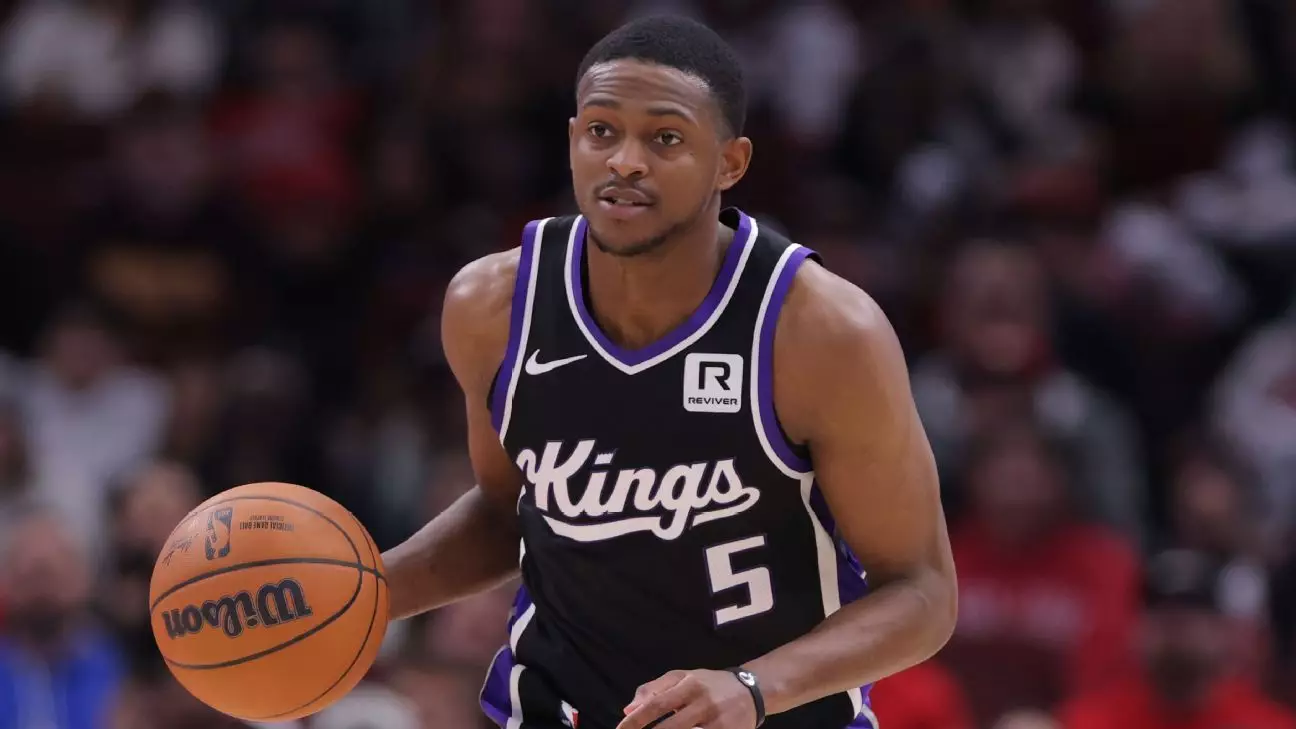In a significant move that has sent ripples through the NBA, the Sacramento Kings, San Antonio Spurs, and Chicago Bulls have executed a complex three-team trade, marking a pivotal moment in the careers of several All-Star players and profoundly impacting the franchises involved. The centerpiece of this deal is the transfer of De’Aaron Fox from Sacramento to San Antonio in exchange for Zach LaVine, alongside various draft assets and other players. This article delves into the implications of this trade on each team and highlights the broader trends emerging in the NBA.
The Sacrificial Lamb: Sacramento Kings’ New Direction
After nearly a decade of rebuilding, the Kings had hoped De’Aaron Fox would be the cornerstone of their franchise. However, Fox’s unwillingness to commit long-term raised questions about his future in Sacramento. Acknowledging their stagnant trajectory—as illustrated by their failure to secure a playoff spot after a promising return to postseason play in 2022—the Kings have opted for a fresh start.
With this trade, the Kings gain Zach LaVine, who is experiencing one of the best seasons of his career, averaging 24 points, 4.8 rebounds, and 4.5 assists—a clear upward trajectory as he shoots at career-high percentages. Landing LaVine not only adds immediate scoring firepower but also aligns Sacramento’s vision with a player known for his explosive athleticism and clutch performances. Furthermore, the inclusion of multiple draft picks, which could provide youthful talent or fuel future trades, signals that the Kings are making a serious investment in their long-term prospects.
For the Spurs, the acquisition of De’Aaron Fox is a strategic move aimed at enhancing an already promising roster highlighted by rookie sensation Victor Wembanyama. Pairing these two players positions San Antonio as a team with formidable offensive capabilities and future potential. Fox’s ability to deliver dynamic playmaking and scoring will be crucial as he transitions into a new system.
This trade signifies a broader shift for the Spurs, who have been in rebuild mode since the retirement of their last generation of stars. By acquiring an established All-Star, San Antonio seeks to cultivate a winning culture while grooming their young talent. The Spurs’ management has clearly identified Fox as a player who can bear the burdens of leadership, especially as he has a year left on his contract, providing temporary stability while they build around him and Wembanyama.
Bulls’ Shift to Reconstructing for the Future
The Chicago Bulls, having struggled to find sustained success in recent years, appear to be diving headfirst into a rebuilding phase. The trade returns significant assets, including multiple draft picks and young players, highlighting the franchise’s commitment to reshaping its roster for the future. With LaVine, once a beacon of hope, being shipped off just shy of his 30th birthday, the organization acknowledges that a shift is required.
Control over their 2025 first-round pick from San Antonio is crucial for the Bulls. This foresight suggests they are keen to stockpile assets, providing the flexibility needed to either draft young talent or facilitate new trades as they seek to re-establish themselves in a competitive Eastern Conference. Players like Zach Collins and Tre Jones can be foundational pieces or valuable trade chips, depending on how the front office decides to build their new roster.
This blockbuster trade arrives at a time when the landscape of the NBA is shifting dramatically. With the trade deadline approaching, the movement of multiple high-scoring players underscores a trend—teams are becoming increasingly aggressive in their strategies to either bolster their current rosters or pivot towards rebuilding with youth. Moreover, as more teams recognize the importance of securing draft capital, this trade may encourage other franchises to reassess their positions in the league, potentially leading to an uptick in player movement.
The trade involving De’Aaron Fox, Zach LaVine, and accompanying assets is more than just a reshuffling of rosters; it signals a fundamental rethinking by the involved teams about their identities, goals, and the future of the NBA landscape. As each franchise navigates this new chapter, fans and analysts alike will be keenly watching how these changes impact the on-court dynamics in the months and years to come.


Leave a Reply